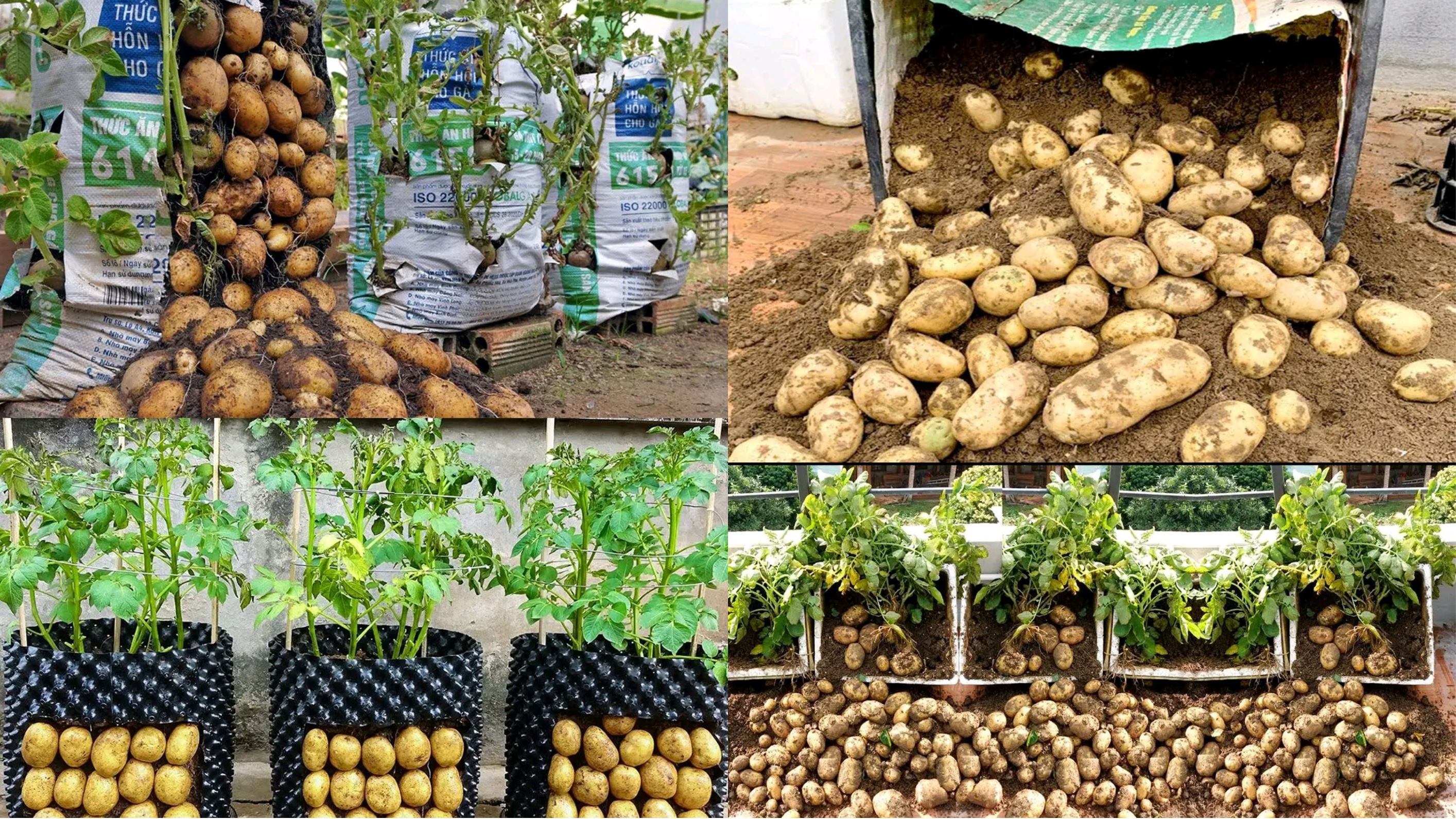A Guide to Growing Potatoes in Containers Introduction: Potatoe is a food enjoy by most people at large, as such it is of high ...
A Guide to Growing Potatoes in Containers
Introduction:
Potatoe is a food enjoy by most people at large, as such it is of high value and demand. In this article i'm going to provide you with the detailed guide on how to grow potatoes using your own containers with the guarantee of successful harvest in maximum of 70days.
1. Understanding the Growth Process:
You first have to identify the potatoes with the potential of sprouting, if you can't do so request the seller to help you in identifying the ones that have the potential to sprout. When these sprouts are planted, each grow to an independent plant. Energy obtained from sunlight by these plants in excesss is stored in the root(tuber) i.e the thicknened sections of the underground stem.
2. Choose the Right Potato Variety that matches the weather:
In shorter season climates, such as the low desert of Arizona, opt for "early" and "mid-season" determinate varieties like:
Yukon Gold
Viking
These type of varieties yield a smaller harvest in a shorter time (60-90 days). For longer cultivation seasons, indeterminate ("late season") potato varieties such as: Russian Blue
Canela Russet
Ramona
Are the best but they take longer time to develop (usually between 110-135 days) and produce a larger harvest than the previous ones.
3. Preparing the Potatoes for Planting:
Put the seed in a place with temperature that ranges between 60-70°F and make they can have access to sunglight for optimal growth. If the potatoe happens to sprout at 2 to many different points, use knife to cut it into pieces and be sure it corresponds to the exact number of sprouts, unless the sprouts are too tight. Some can even sprouts in about 6 different points, making it 6 parents seeds when cut.
4. Timing the Planting:
Raining season is not the recommended season to plant the potatoes, you can plant the potatoes from August to January. When harvesting try as much as possible to prevent decay by harvesting within one or two weeks.
5. Choosing a Suitable Container:
Potatoes can be grown in various containers such as trash cans, painting buckets, sacks e.t.c. Regardless of the container, make sure you follow the fundamental planting procedures to be successful.
6. Planting the Right Quantity:
Correlate the number of potatoe seed with the container size. Generally each potato requires 3 gallons of space approximately for optimal growth. Do not over crowd your seed potatoe as it may result in smaller potatoes.
7. Correct Planting Technique:
Create a layer of loose soil fortified with compost at the base of the container(3 to 4 inch in total). Place the sprouted seed potatoes, with the sprouted side facing outward, into the soil. Bury the seed by adding 2-3 inches of soil. As the shoots emerges, cover them halfway when they reach about 6 inches in height. Continue this process until you reach the top of the container.
8. Ensuring Adequate Moisture:
Container-grown potatoes rely on the moisture you provide. You can use a drip line to ensure uniform watering, and maintain soil that is evenly moist but not soaked. Consider using an acid-loving organic fertilizer or seaweed extract during the growing season. A layer of straw can help retain moisture.
9. Optimal Container Placement:
Daily sunlight requirement for potatoes is minimum of 6 hours daily. In the low desert, full sun is ideal for fall planting, while spring-planted potatoes benefit from a bit of afternoon shade to prevent rapid drying.
10. Harvesting and Storing Potatoes:
'New potatoes' can be harvested before reaching full maturity. For determinate potatoes, check 60-90 days after planting, and for indeterminate varieties, check 100-120 days after planting. Harvest when the potatoes have reached a satisfactory size. Cure harvested potatoes for a few hours outdoors, brush off loose soil, and store them in a cool, dry place for extended storage.
I hope you find this article educative, thanks for reading.










No comments